Uv Suite

The concept is to make sculptural works with a chamber that collects air, and is held and sanitised by UV-C, then released. To capture air and make it circulate for a while, rather than air just passing over UV light gives the UV more change to destroy pathogens. A breathing and cleaning work of indoor air. This should be hung from the ceiling, as hot air from people’s breath floats upwards and gather at the top of a room.

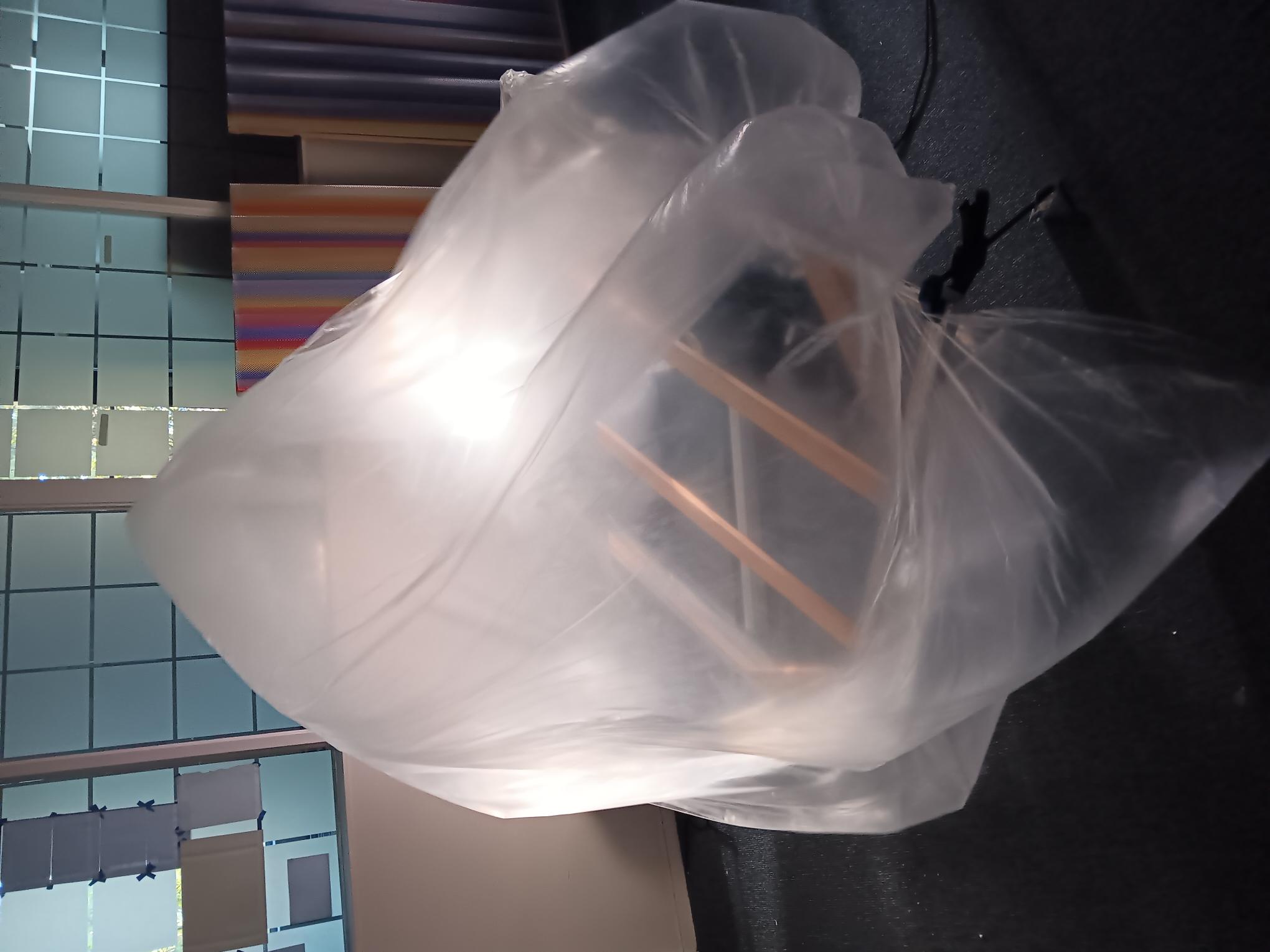 We are not using UV-C . Even though 222nm is meant to be safe for humans while being effective as a germicide , killing pathogens in the air by breaking down the DNA or RNA of the viruses. Safety precautions are necessary when using UV-C lamps, and they should be operated in controlled environments by trained professionals.
We are not using UV-C . Even though 222nm is meant to be safe for humans while being effective as a germicide , killing pathogens in the air by breaking down the DNA or RNA of the viruses. Safety precautions are necessary when using UV-C lamps, and they should be operated in controlled environments by trained professionals.
They can cause cancer, damage the eye and potentially interact with other particles causing unknown chemical reactions.
There is no regulation regarding UV-C lamps…..even though they are for sale.
A fan or multiple fans push air into a bag / bladder / canopy / lung, and inflates, the air circulates around a UV lamp, killing pathogens then is expelled.
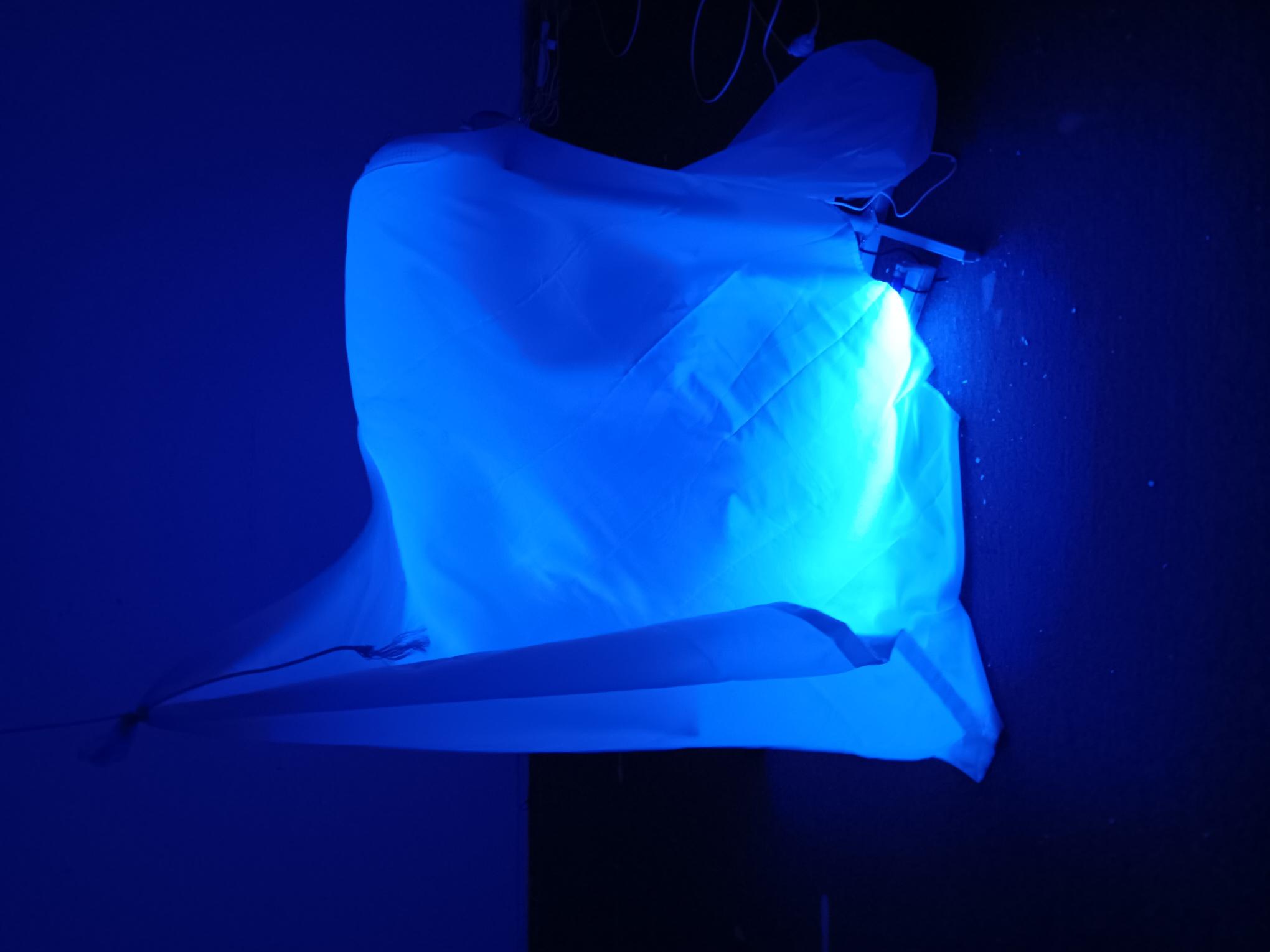
We are using long-wave form UV for this stage of experimentation. – i.e Blacklight.
Blue Light- Phosphor
When the UV lamp is placed inside the air ‘bag’ ‘lung’ , the phosphor in the white material excites and produces a glowing light through a process known as fluorescence or phosphorescence. Phosphors are added to clothes and paper etc to make them super white and look clean… here it give a sense of deep monochrome to almost the paranormal apparition.

in person you can see the change of coloured light from the naked UV tube, an intense, vibrating purple filter to a deep neon blue when placed in side the air bag. The white glows a vivd blue and I wonder if that then means that the harmful UV light is trapped inside the bag and the light emitted is filtered now on the blue part of the spectrum and less harmful..?
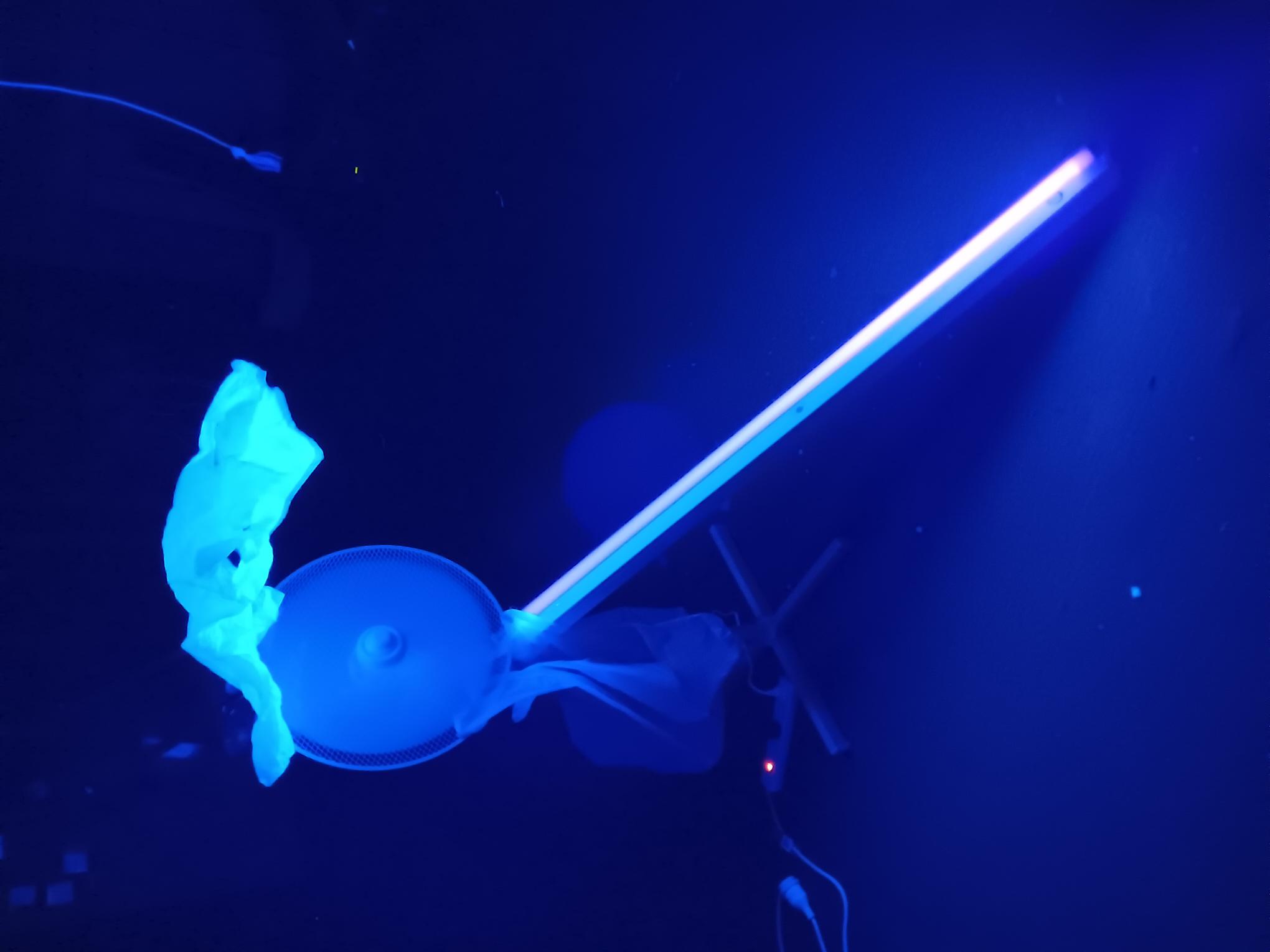
This could be measured with a UV meter.
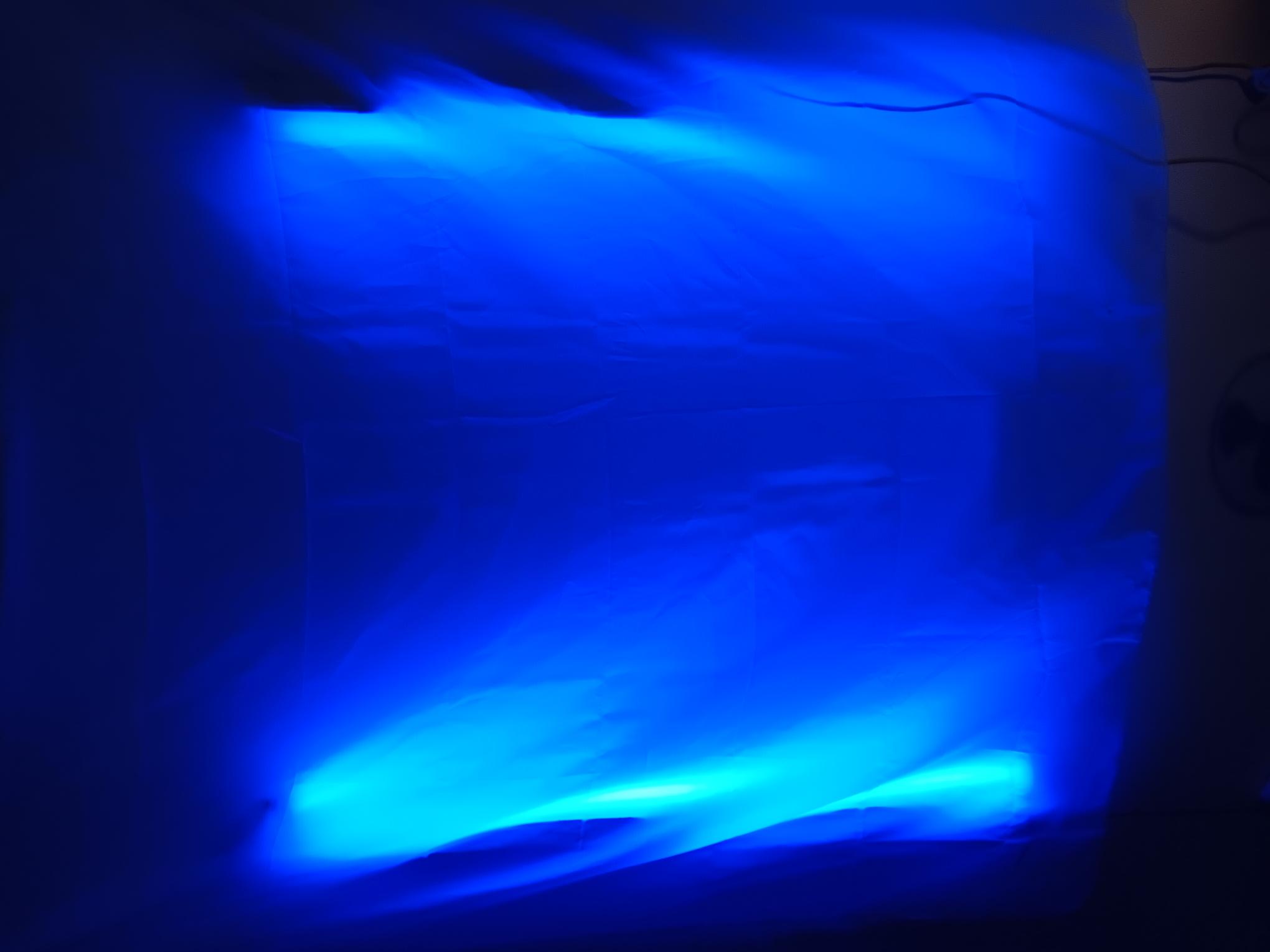
Effects of blue light

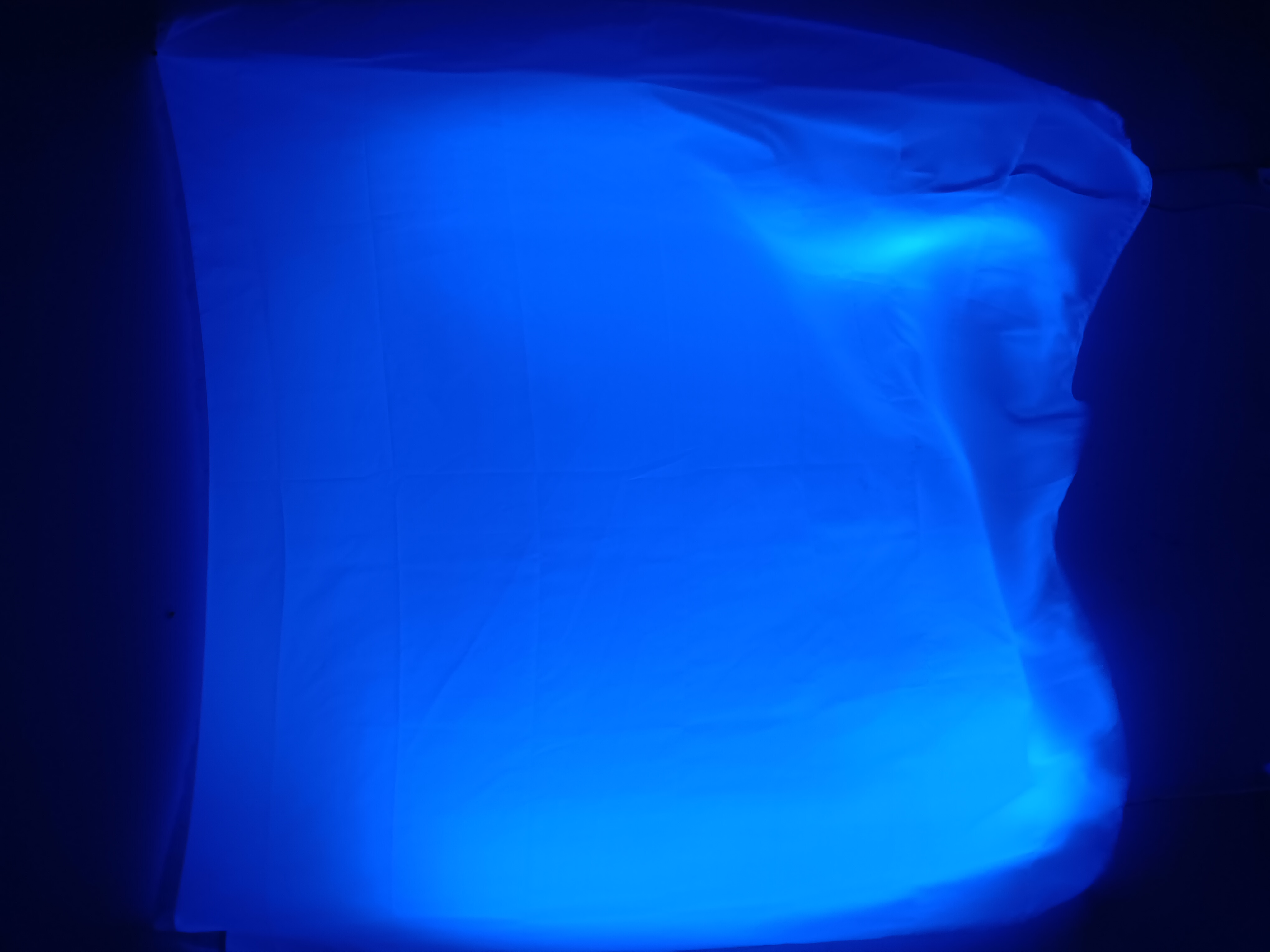 Blue is visible light that has a relatively short wavelength and a high energy level. It is part of the electromagnetic spectrum. located in the range of the spectrum between violet and green light, with wavelengths typically ranging from about 450 to 495 nanometers (nm).
Blue is visible light that has a relatively short wavelength and a high energy level. It is part of the electromagnetic spectrum. located in the range of the spectrum between violet and green light, with wavelengths typically ranging from about 450 to 495 nanometers (nm).
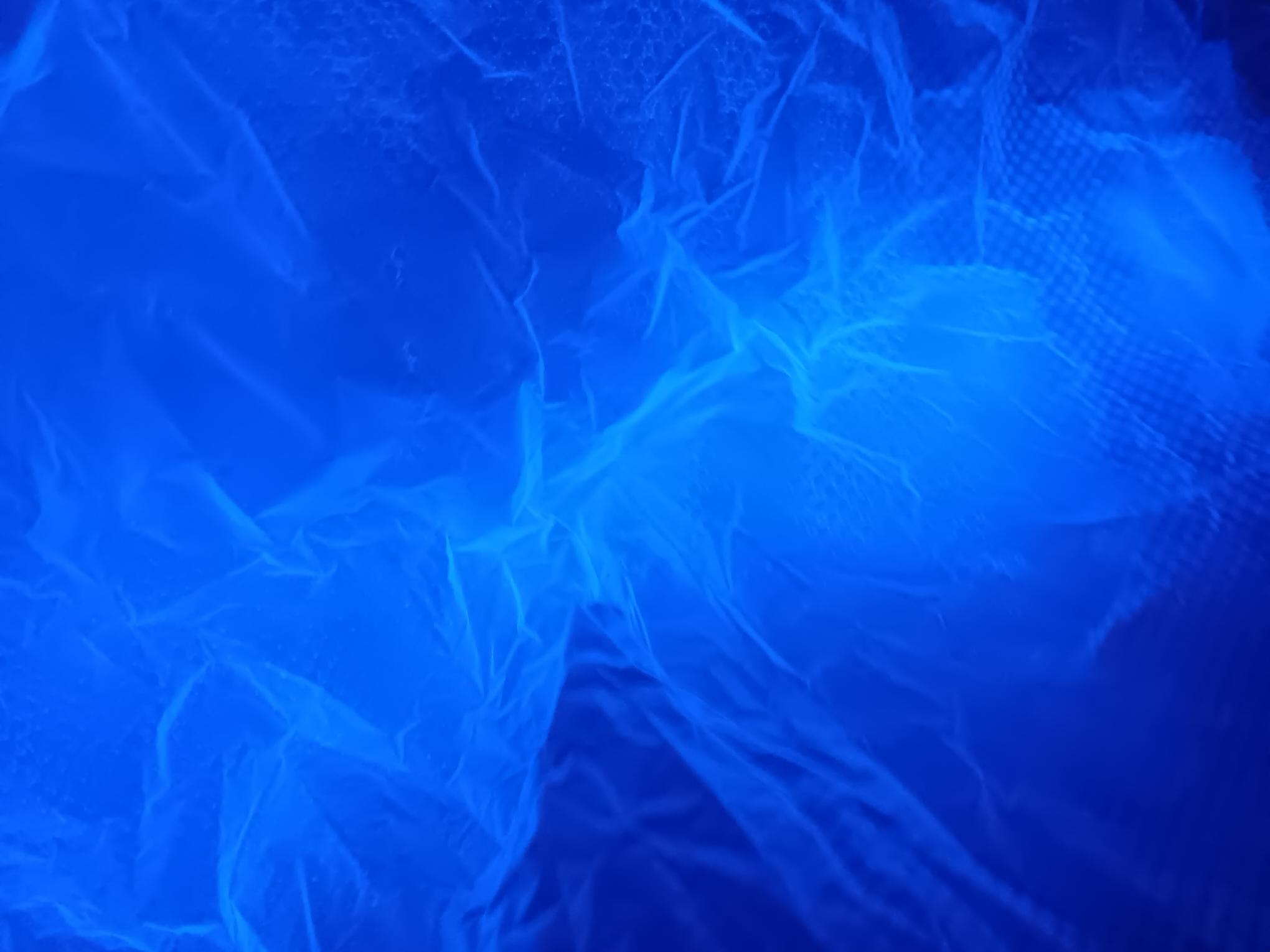
Blue light comes from the sun and artificial sources like LEDs, tablets, smartphones and screens. It can have effects on our circadian rhythms- ie sleeplessness at night from screens. But also can have stimulating effect on brain chemistry and make you more alert, maybe hard wired from the blue sky during the day…?

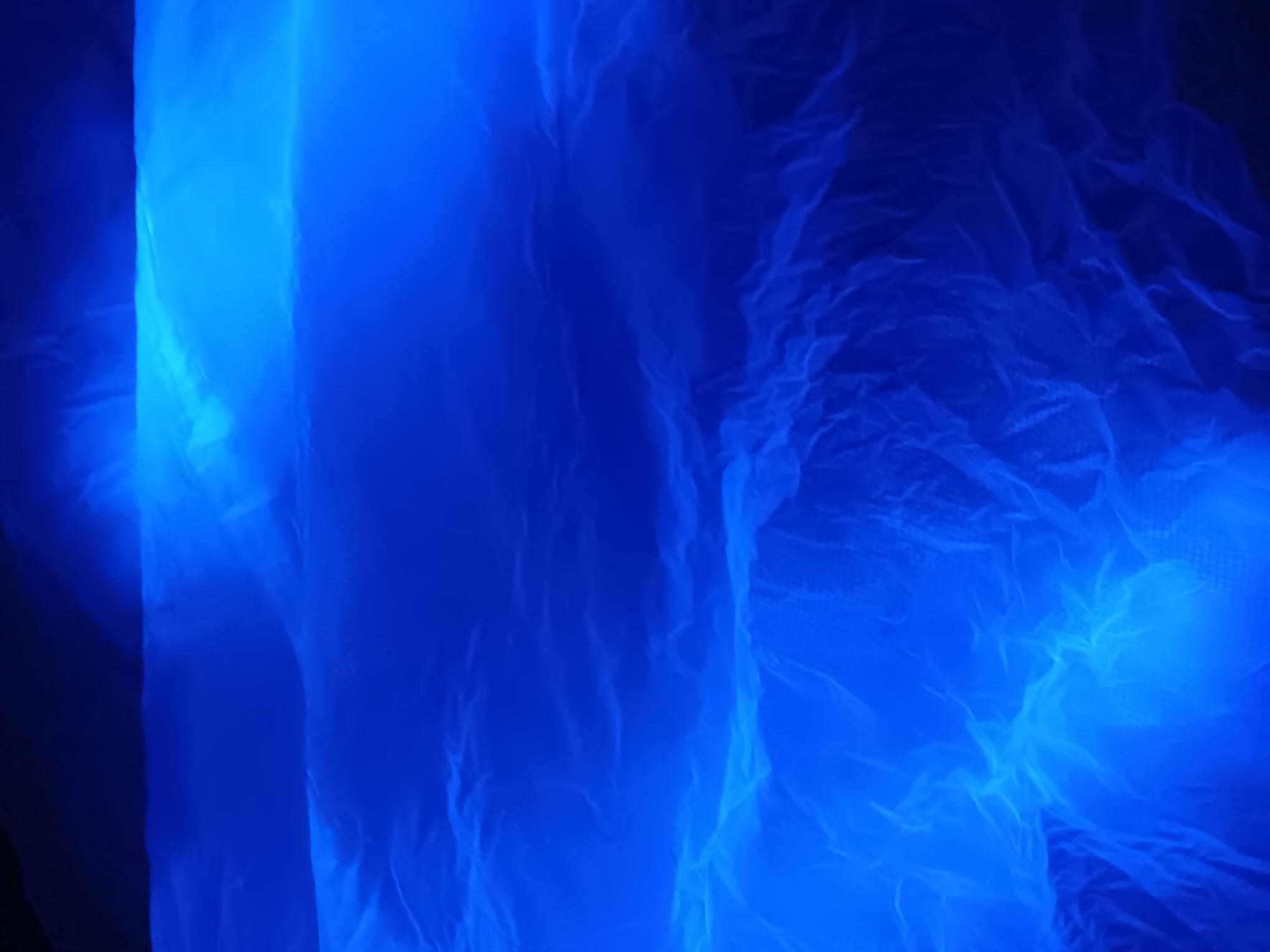 Above is the material fluorescing under the UV light, making visible the cresses and undulations as air passes underneath
Above is the material fluorescing under the UV light, making visible the cresses and undulations as air passes underneath
Along side the inflatable bag / bladder / canopy / lung concept for holding air captured while the UV cleans it. I have tried a more linear wall based version.. Also including the ideas around the flow of air in a space. The best way to ventilate is having the air being circulated from the floor upwards.
This is called Laminar Flow.
Below, a hollow wall wrapped in white filter material sucks in air at the top through tiny holes with fans. UV-c lamps inside the ‘wall’ sanitise the air and also make the white material glow and gives a kinetic downward ripple like water. The clean air is then ejected at the base of the wall through vents to rise up to the ceiling again via negative pressure.
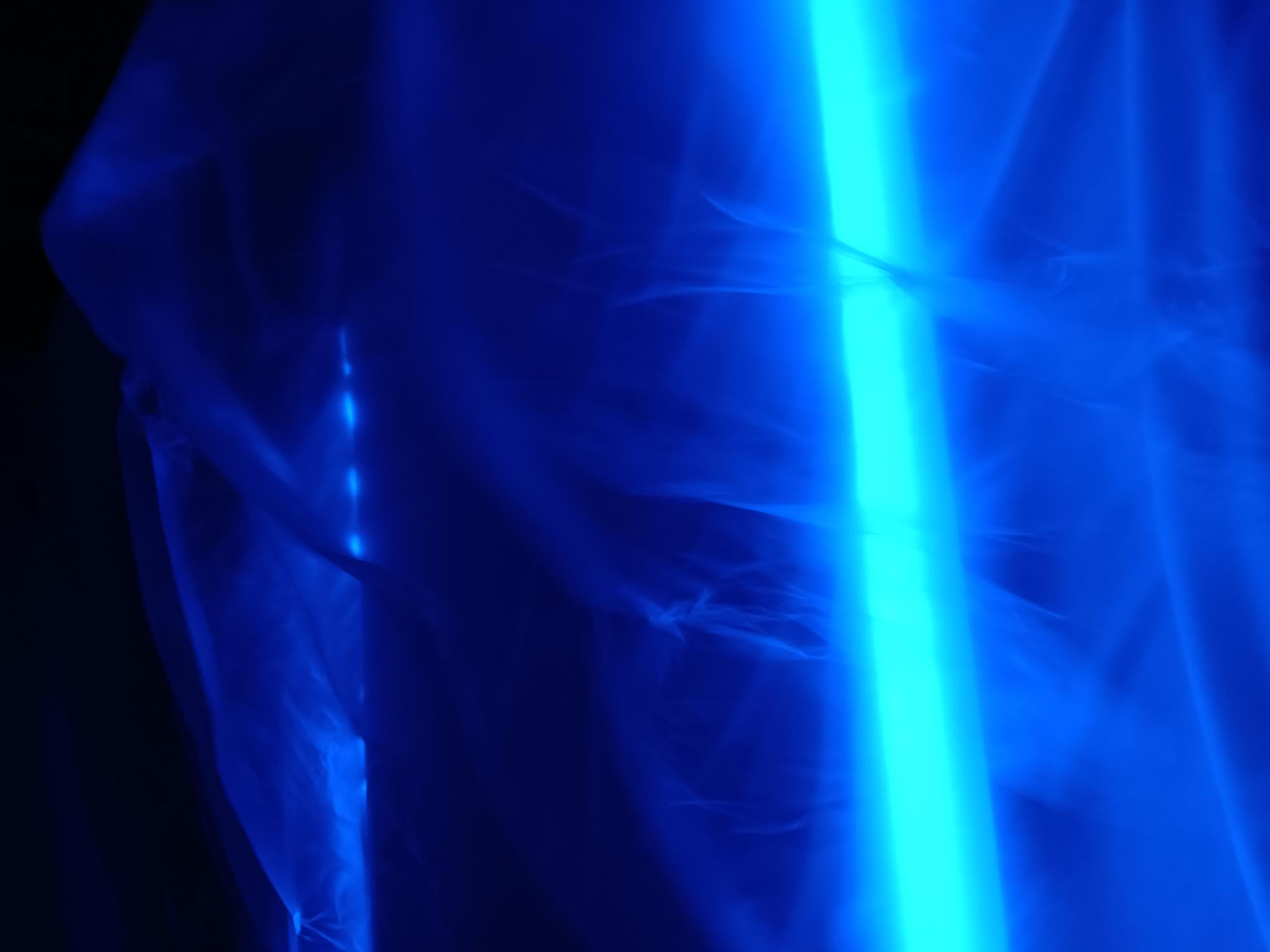
Ive used layers of materials to experiment with the feeling of depth and saturation of the blue.

Blue with the EYE..
Cells called rods and cones in the turn light into electrical signals in the retina. Rods and Cones are photoreceptor cells that are responsible for detecting different aspects of light and colour. The cells for collecting shortwave length blue light are called S-cones.
S-cones are a lot smaller than the other cones used for collecting green and red light. The thinking behind this is that in nature blue is the most rare colour, where as green is usually most prevalent, with many shades. So through evolution the eye is more capable to seeing greens and reds.
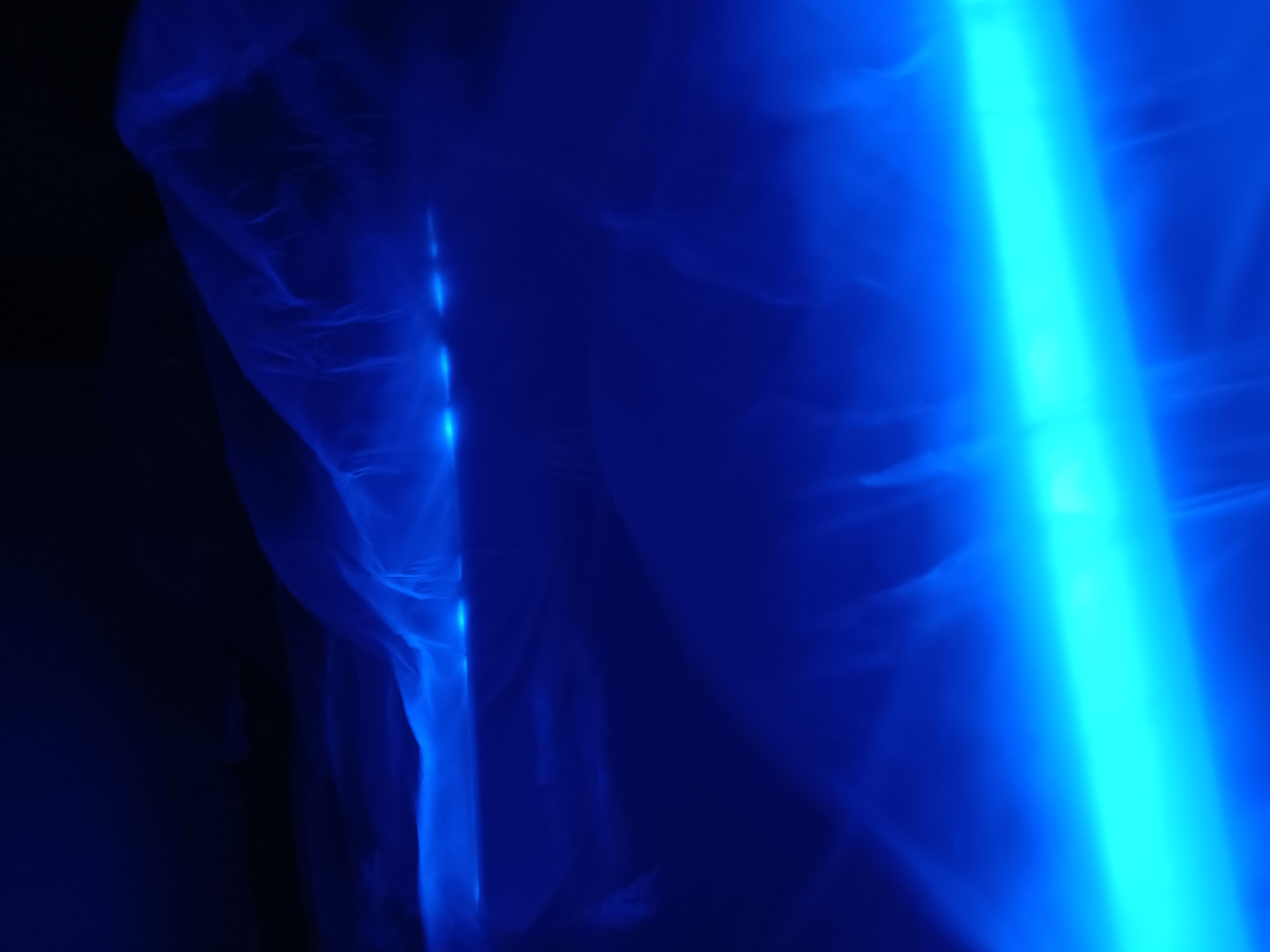
i can’t focus completely on blue light, if i think of looking at a blue led digital clock (they have them at some train stations), i cant focus on the time until Im really close, even then the colour always seems fuzzy….
Next up- ideas on room capacity and awareness of shared breath.